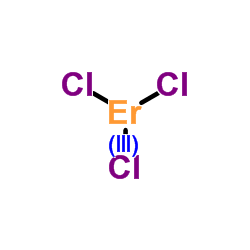Plasmonic enhanced emissions from cubic NaYF(4):Yb: Er/Tm nanophosphors.
L Sudheendra, Volkan Ortalan, Sanchita Dey, NigelD Browning, IM Kennedy
Index: Chem. Mater. 23 , 2987, (2011)
Full Text: HTML
Abstract
A metal shell was used in this study to provide significant enhancement of the up-converted emission from cubic NaYF(4) nanoparticles, creating a valuable composite material for labeling in biology and other applications - use of the cubic form of the material obviates the need to undertake a high temperature transformation to the naturally more efficient hexagonal phase. The NaYF(4) matrix contained ytterbium sensitizer and an Erbium (Er) or Thulium (Tm) activator. The particle sizes of the as-synthesized nanoparticles were in the range of 20-40 nm with a gold shell thickness of 4-8 nm. The gold shell was macroscopically amorphous. The synthesis method was based on a citrate chelation. In this approach, we exploited the ability of the citrate ion to act as a reductant and stabilizer. Confining the citrate ion reductant on the nanophosphor surface rather than in the solution was critical to the gold shell formation. The plasmonic shell enhanced the up-conversion emission of Tm from visible and near-infrared regions by up to a factor of 8, in addition to imparting a visible color arising from the plasmon absorption of the gold shell. The up-conversion enhancement observed with Tm and Er were different for similar gold coverages, with local crystal field changes as a possible route to enhance up-conversion emission from high symmetry structural hosts. These novel up-converting nanophosphor particles combine the phosphor and features of a gold shell, providing a unique platform for many biological imaging and labeling applications.
Related Compounds
| Structure | Name/CAS No. | Molecular Formula | Articles |
|---|---|---|---|
 |
erbium chloride
CAS:10138-41-7 |
Cl3Er |
|
Quantitative separation of bacteria in saline solution using...
1992-01-01 [J. Gen. Microbiol. 138(1) , 63-8, (1992)] |
|
Fluorescence characterization of the interaction Suwannee ri...
2011-11-01 [J. Inorg. Biochem. 105(11) , 1469-76, (2011)] |
|
Measurement of the susceptibility of paramagnetically labele...
1987-07-01 [Anal. Biochem. 164(1) , 181-9, (1987)] |
|
Ogliaro, F. et al.
[Inorg. Chem. 37 , 6199, (1998)] |
|
Heer, S.; et al.
[Adv. Mater. 16 , 2102, (2004)] |